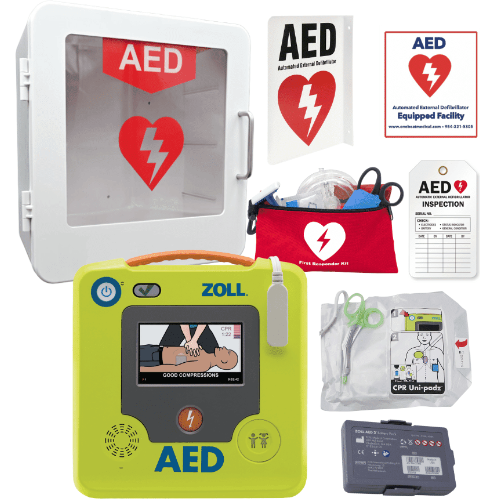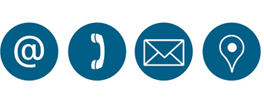In Broward County, Florida, there are specific regulations and guidelines regarding the installation and maintenance of Automated External Defibrillators (AEDs). Here are the key points for AED compliance:
1. Florida Statutes
Good Samaritan Law: Florida’s Good Samaritan law protects individuals and businesses from liability when using an AED in an emergency, as long as they act in good faith and in a reasonably prudent manner.
2. Public Access AEDs
Businesses and public facilities are encouraged to have AEDs available. Specific regulations may vary based on the type of establishment (e.g., schools, gyms, large venues).
3. Training Requirements
While training for staff is not always mandated, it is highly recommended that employees are trained in CPR and AED use to ensure effective response in emergencies.
4. Location and Visibility
AEDs should be placed in easily accessible and visible locations. Proper signage indicating the location of the AED is required.
5. Maintenance and Inspection
Regular maintenance checks are essential to ensure the AED is operational. This includes checking battery status, pad expiration dates, and conducting routine inspections.
6. Registration
In some cases, businesses may be required to register their AEDs with local emergency services or health departments. Check with Broward County EMS for specific registration requirements.
7. Record Keeping
Maintain records of training sessions, maintenance checks, and any incidents where the AED is used.
8. Local Regulations
Check for any additional local ordinances or regulations specific to Broward County, as they may have specific requirements beyond state laws.
Recommendations:
Consult Local Authorities: Contact Broward County Emergency Services or the local health department for the most current and applicable regulations.
Regular Training: Provide ongoing training for staff to ensure they are familiar with AED operation and emergency procedures.
An AED kit typically refers to a complete package that includes an Automated External Defibrillator (AED) along with essential accessories and supplies for effective emergency response in the event of a cardiac arrest. Here’s what an AED kit generally contains:
Components of an AED Kit
Automated External Defibrillator (AED)
The primary device that analyzes the heart's rhythm and delivers an electric shock if needed. Most models provide voice prompts and visual indicators to guide users through the process.
Electrode Pads
Adult Pads: Used for most adults.
Pediatric Pads: Smaller pads designed for use on children, often with specific instructions for use.
CPR Mask
A barrier device that allows the rescuer to provide rescue breaths safely during CPR.
Disposable Gloves
Latex or nitrile gloves to protect the responder while administering aid.
Scissors
For cutting clothing or other materials to access the chest during an emergency.
Alcohol Wipes
For cleaning the skin where the pads will be applied, ensuring good adhesion.
User Instructions
Clear, step-by-step instructions for operating the AED, often in a user-friendly format.
Maintenance Log
A log to track inspections, maintenance, and any usage of the AED, including battery and pad expiration dates.
Emergency Contact Information
Instructions on whom to contact for emergency services and internal protocols.
Signage
Clear signage indicating the location of the AED and how to use it, often featuring bright colors for visibility.
Benefits of Having an AED Kit
Immediate Response: Enables quick action in cardiac emergencies, potentially saving lives.
User-Friendly: Designed for use by laypersons, making it accessible to non-medical staff and bystanders.
Training Resource: Having an AED kit can encourage staff training and familiarity with emergency procedures.
Considerations for Implementation
Placement: Ensure the AED kit is placed in a highly visible and easily accessible location.
Regular Maintenance: Schedule routine checks to ensure the AED and its components are functional and up to date.

An Automated External Defibrillator (AED) can be a critical tool in saving a life during a cardiac emergency. Here’s how it works and why it’s so effective:
1. Understanding Cardiac Arrest
What Happens: Cardiac arrest occurs when the heart suddenly stops beating effectively, leading to a loss of blood flow to vital organs, including the brain.
Importance of Time: Brain damage can start within minutes without blood flow, making rapid response essential.
2. Immediate Action
Call for Help: In an emergency, the first step is to call emergency services (like 911) to ensure professional medical assistance is on the way.
Perform CPR: Begin CPR (cardiopulmonary resuscitation) immediately to keep blood flowing until an AED is available.
3. Using the AED
Quick Accessibility: An AED can be found in public places, workplaces, and many other locations, making it accessible when every second counts.
Step-by-Step Guidance: Most AEDs provide clear audio and visual instructions, making them user-friendly even for people with no medical training.
Heart Rhythm Analysis: The AED analyzes the heart's rhythm to determine if a shock is needed. If the rhythm is shockable, the device will advise the user to deliver a shock.
4. Defibrillation
Restoring Heart Rhythm: If a shock is advised, the AED delivers a controlled electric shock to the heart, which can help restore a normal rhythm.
Improving Survival Rates: Early defibrillation (within the first few minutes of cardiac arrest) significantly increases the chances of survival.
5. Post-Shock Care
Continued CPR: After delivering a shock, CPR should continue until emergency medical personnel arrive or the person shows signs of recovery (e.g., responsiveness, normal breathing).
Professional Help: Medical professionals will take over and provide advanced care.
6. Training and Awareness
Encouraging Preparedness: Training staff and the public on how to use AEDs can save lives. Familiarity with the device reduces hesitation during emergencies.
Conclusion
The rapid deployment of an AED in conjunction with CPR can dramatically increase the chances of survival for someone experiencing cardiac arrest. Having AEDs accessible in public spaces, workplaces, and community areas, along with trained individuals ready to use them, can be the difference between life and death. If you have more questions or need specific information about AEDs, feel free to ask!
.png)






